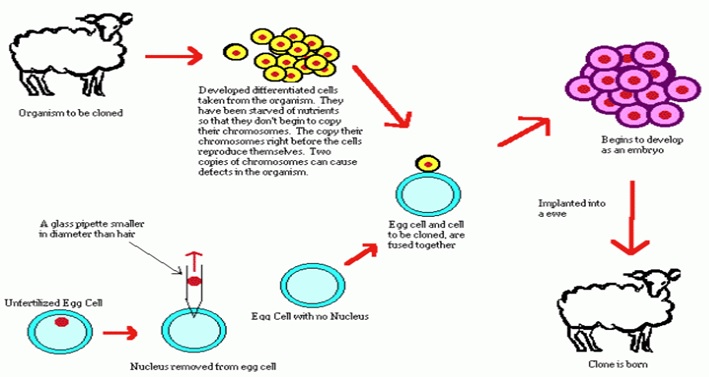Stem cell and cloning Assignment Help
What are stem cells?
Stem cells are those cells that are present in undifferentiated state and have capability to differentiate into different cell types. Firstly, they can differentiate and renew hence are not some special cells, secondly they can be differentiated to make some special cell or tissues of the body.
Types of stem cells: stem cell comes from two main sources, the embryonic stage and the adult stage also called embryonic stem cell and adult stem cell.
Stem cell and cloning Assignment Help By Online Tutoring and Guided Sessions from AssignmentHelp.Net
Embryonic stem cell: As the name suggest, embryonic stem cell are derived from the early embryos. It is generally done during the blastocyst stage where fertilization is done in vitro. The blastocyst stages have two layers, inner and the outer. On one hand outer layer forms the placenta whereas on the other hand inner layer forms the tissues and organs of the complete organism and this inner portion is also the stem cell that differentiates to form different cells and organs. Therefore, during the blastocyst stage the cells from the inner layer are immediately extracted and kept in the culture dish along with required nutrients. The laboratory condition is so mentioned that cells multiply but it doesnt differentiate. Now these cells can be used to make specialized cells of human body.
Adult stem cell: These are also called somatic stem cell. These stem cells are found inside different tissues of a well- developed body, like that of bone marrow, blood, liver and many more. In these tissues they remain in the undivided stage for years to years and activation of these cells takes place only when it gets trigger by disease or injury. Lets take an example, if there is any damage in the liver, the stem cell present there immediately divides and differentiate in the required cell type so as to reform the lost portion. In some cases, even it forms the complete organ as well. Hence, this cell can be extracted and grown in culture to differentiate into special cell types.

Reference: www.stemcellsforhope.com
Beside this, stem cell can be divided into different types as per their potential to differentiate into other cell type like totipotent cell( can differentiate into any cell type like embryonic stem cell), pleuripotent cell( can differentiate into any cell type like that of adult stem cell), multipotent cell(to differentiate into closely related cell type like HSC that can form only blood cells), oligopotent cell( can differentiate into only few cell type) and finally is the unipotent cell( can differentiate into its same type).
Properties of stem cell: Stem cell have certain properties that distinguishes them from other cell,
- They have power to replicate and proliferate.
- They are unspecialized cells.
- It can give rise to specialized cells of the body.
Importance of stem cell: There are many importance of stem cell that helps scientist in one or the other ways,
Cloning
Cloning means to make exact copy of any organism whose genetic constitution is same as that of the parent organism. The organisms here are called clones. Though clones are usually seen naturally but development of science has made it easier to create clone artificially. Presently, two common method used for cloning; they are artificial method and somatic cell nuclear transfer.
In case of artificial method, embryo is used to make the clones that have exactly the same process like that of the natural methods. In this case, the embryos are taken in the Petri dish and cells are separated as individual cells that develop in the Petri dish for certain time period. Then they are again implanted in foster mother where the embryos develop generating into identical twins or clones.
Somatic cell nuclear transfer: This is an artificial way of generation of clones that involves nucleus and somatic cell of organisms body. Somatic cells are non- reproductive cells of the body, hence its nucleus is taken and rest of the cell is discarded. Likewise, from an egg cell nucleus is removed and then nucleus of somatic cell is inserted into the enucleated egg cell. After a period of time when cell reaches blastocyst stage, it is implanted inside the foster mother and a completely new organism is developed. Example is the dolly the sheep.

Reference: www.bruceleeeowe.wordpress.com
Beside these two techniques molecular cloning using DNA fragment, stem cell cloning, organism cloning are many other ways to develop identical organism or same genetic constituent in two organisms.
Cloning helps to enhance good characteristics in any organism and multiply it for different usage. Cloning of cow can help to produce more milk of good quality and increase the number of good breed.


